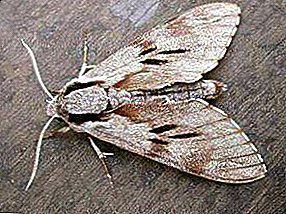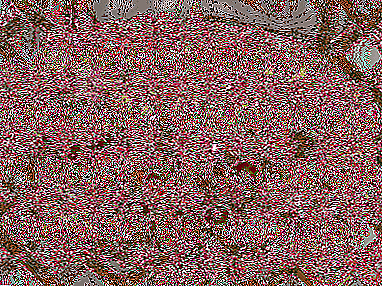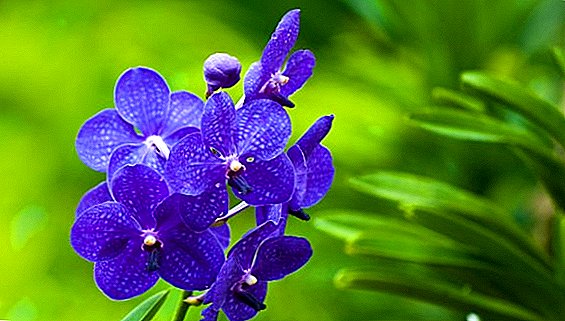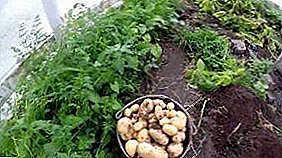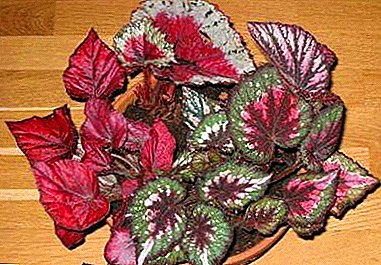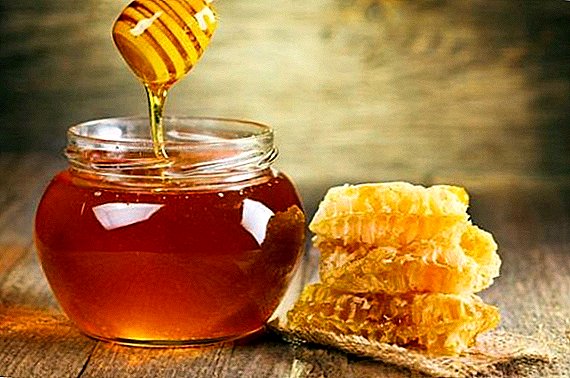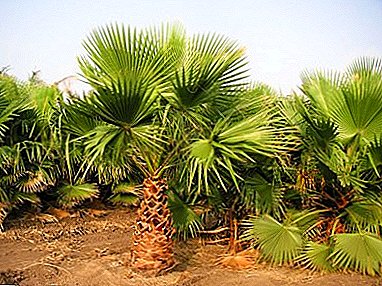
Washington - unusual beauty palm, with fan-shaped leaves.
She came from the southern part of North America and became very popular with the growers of our country.
In this article we will tell about the palm Washingtonia: care at home, photos, reproduction, pests and more.
Kinds
- Filamentous (or filamentous) - flowering variety. The leaves in the form of large threads in a green plant have yellow edges and a white vein. The variety belongs to the evergreen monocotyledonous plants. Because of the presence of the stem and leaves in the shape of a fan, this palm tree is called treelike.
- Filamentous (or filamentous) - flowering variety. The leaves in the form of large threads in a green plant have yellow edges and a white vein. The variety belongs to the evergreen monocotyledonous plants. Because of the presence of the stem and leaves in the shape of a fan, this palm tree is called treelike.


And in this video you will find for yourself even more information.
- Powerful (or Robusta) - a variety with a more elongated and thin stem. The crown is much larger than the previous one, and the long leaves with brownish petioles carry fewer fibers.
- Powerful (or Robusta) - a variety with a more elongated and thin stem. The crown is much larger than the previous one, and the long leaves with brownish petioles carry fewer fibers.


Home care
- After the purchase. Still in the store, carefully examine the palm tree. There should be no mechanical damage or, moreover, traces of pest infestation. At home it is worthwhile to arrange a two-week isolation from other plants. After washing thoroughly with warm water.
- Lighting. Palm home prefers bright places. It will feel great on the windows facing west or east. If the windows face south, just put it next to it, regularly turning the sides towards the sun for a uniform growth of the crown. But very young palm trees on this side of the horizon should not be placed due to an excess of light.
- Temperature. The plant can not be called too thermophilic. She prefers a moderate temperature in the region from 20 to 25 degrees. The heat of the palm, of course, is not terrible, in order to avoid drying of the leaves, the access of air is necessary. Winter - a period of restand the optimum temperature should be between 10 and 12 degrees. The thread-bearing one can survive at lowering up to 5 degrees, and powerful - not less than 8. Washingtonia does not tolerate cold drafts and severe frosts.
- Humidity should be moderate. In this case, the leaves do not dry. It grows well if the air is dry, but high humidity can cause disease and rot. Spraying is recommended;
- Watering. Young sprouts do not need a lot of moisture, but an adult plant needs abundant watering, although it tolerates drought easily, it is better that the soil is wet. Use warm and settled water. With the onset of cold weather, watering is reduced.
- Bloom. In captivity, they bloom extremely rarely and not earlier than 12 to 15 years after planting in specialized greenhouses. After appear fruit, in the form of berries with a size of 1.5 cm, they can be eaten. At home, life can be only 10 years.
- Pruning. After complete drying of the stem, old dry leaves can be removed.
This video details care for Washington.
Transfer
 Such a plant process endures extremely hard.
Such a plant process endures extremely hard.
When the flower pot has become small, it is necessary to turn it over very carefully, clasping the trunk with your hands, and remove it with a large earthy clod, transfer it to a new container.
If there is still room for growth, it is enough to replace only the top layer of the earth.
Flowerpot better to choose with drainage holes, in order to avoid stagnant water.
The soil. For planting it is necessary to prepare a mixture of sand, turf land, leaves and humus.
Top dressing. Palma in spring and summer needs fertilizer every two weeks. To do this, purchase a full range of mineral fertilizers. In winter, do not feed.
Growing up
Since the lateral processes of this plant do not appear, the best way to grow Washingtonia palm is to grow from seeds (at home it will not be difficult to do this).
Choose only fresh seeds, they germinate faster in room conditions. To achieve this, carefully cut along the seam and soak in water for several days. Water change regularly.
In a container with prepared soil lay the seeds and lightly sprinkle with earth. Top closed with glass or just a package. Place choose a warm, you can install on the battery, not too hot. Regularly ventilate and water.
And in this video clip clearly shows how to make a pick.
Diseases and pests:

- Mealybug - A small insect, sucks the juice from the plant.
- Spider mite - A serious pest, although the size is only about 0.5 mm.
- Shchitovka - has no legs and wings, also applies to sucking.
- White fly - medium-sized, on wings a whitish bloom.
The easiest and safest way - wipe the leaves with a cotton pad dipped in water with soap. Use chemicals only for extensive lesions.


